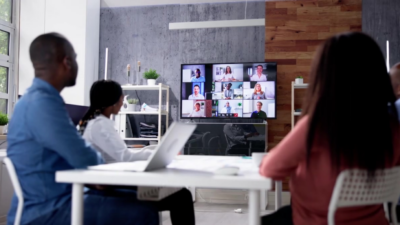Now two and half years since the pandemic began in the U.S., many aspects of how work and everyday life will happen has come into focus. This new series will explore five distinct lessons from the pandemic as it relates to the office and new norms surrounding the workplace.
Hybrid work is here to stay
In a survey of 207 heads of real estate released by Colliers in June, 75% said they will be embracing some form of hybrid work. Half said they were intending to invest to significantly alter their workplaces to support this direction.
Hybrid work means that location is intentional
People will choose the location that best supports the activities they need to accomplish each day. Heads-down focus work will continue to be done at home or at other private places where distractions can be controlled or minimized. But there is still a reason to decide to travel to the office for the activities and experiences that only the office can provide.
The new purpose for the office
The new purpose for the office is about being together: socializing, inventing, celebrating and collaborating. It’s not the place people will spend an hour-long commute to visit for 8 hours of heads-down focus work. They can do that at home. Companies that want to attract employees to the office will be successful when they create a “fear of missing out” through mindfully curated events that are interesting and compelling enough to pull people from their homes.
Workplace activities that will attract employees may include special events; meetings with leadership; meetings with colleagues, both socially and for business; small and large collaborative meetings focused on innovation; onboarding new staff; celebrations; social activities both planned and spontaneous; connecting with company history and culture.
The design of the office will also change. Spaces must be repurposed from assigned desks to space that supports events, collaboration and social activities. And it is highly likely that companies will need less space or will grow without adding footprint – all empowered by a hybrid work model.
A magnet not a mandate
Over the past 2 years some employers have issued mandates for “The Return” only to see them rejected by employees or derailed by a new virus strain. Employers are now working in more nuanced ways to respond to the contradictory messages they are hearing from employees: Employees say they miss their colleagues and the business and social interactions that they had in the office, but they also enjoy the freedom they’ve experienced working from home and the time they’ve gotten back by skipping their commute. Employers are now beginning to pilot different return strategies and curated events and measuring how employees and their managers are responding.
What to do now
Be ready for the CFO: If they haven’t already, your CFO is going to reach out and ask, ‘Why do we have so much space when it is empty all the time?’ It’s time to gather data on utilization, the remote work experiences of employees and options for your existing space.
ID attractors: Learn from employees what will draw them to the office. What are the can’t-miss events and activities that will be so compelling, they will generate FOMO?
Learn from the return: Establish a metrics program to understand how your office space is being used as people come back. What spaces are popular? What activities attract the most people? How are managers experiencing the post-pandemic world of work?
Establish a CXO – Chief Experience Officer: Attracting people to the office won’t happen if you don’t have a plan and a person held accountable for executing that plan.

 Workplace Advisory
Workplace Advisory

 Anthony Shell
Anthony Shell
 Andrew Steele
Andrew Steele
 Aaron Jodka
Aaron Jodka Michelle Cleverdon
Michelle Cleverdon